The world’s oldest museum has no fewer than 6 million
items spanning 1.8 million years of world civilization. The collection
was started with the bequest of a physician and antiquarian, Sir Hans
Sloane, in 1753. In the 18th and 19th centuries travellers and
emissaries, such as Captain James Cook, Lord Elgin, Lord Curzon and
Charles Townley, added treasures from around the world. The present,
Classical style building was completed around 1850. In 2000 the central
courtyard was opened as a new public space the Great Court.
Great Russell Street WC1 020 7323 8000
www.thebritishmuseum.ac.uk
Open 10am–5:30pm daily (selected galleries 10am–8:30pm Thu & Fri) Great Court: Open 9am–6pm Sun–Wed, 9am–11pm Thu–Sat Guided tours at 10:30am, 1pm & 3pm daily
|
|
Visitor guides with full
maps are on sale at the information desk in the Great Court and shops.
Otherwise start to the left of the main entrance with the Assyrian,
Egyptian, Greek and Roman galleries. The North Wing ethnography and
Asian galleries provide a change from Classical material, as do the
early British, medieval and Renaissance collections on the east side.
|
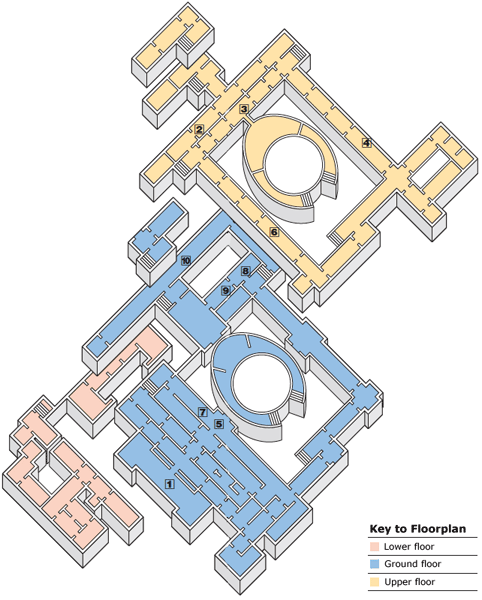
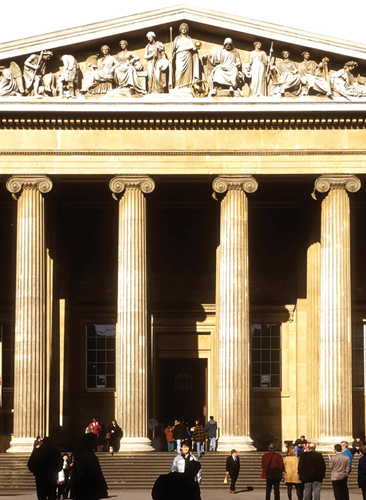
The British Museum Facade
|
There are three cafés and one restaurant.
|
|
|
Picnics can be eaten in the forecourt by the main entrance.
|
|
|
Highlights’ tours give an introduction to the collection.
|
|
|
The British Museum shop sells reproduction artifacts.
|
|
Top 10 ExhibitsParthenon Sculptures This
spectacular 5th-century BC frieze from the Parthenon was made under
Pericles and shows a procession in honour of the goddess Athena. It was
obtained in 1779 by Lord Elgin, Ambassador to Constantinople.
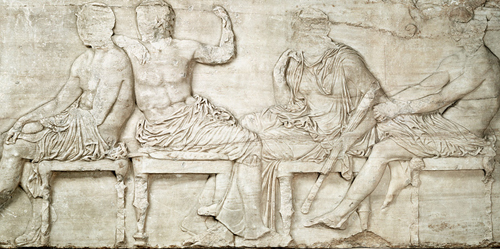
Mummified Cat Cats
and sacred cows were mummified in Ancient Egypt. This cat comes from
Abydos and dates from around 30 BC. Many Egyptian deities took on animal
shapes, as seen on wall paintings and other artifacts. Ram in a Thicket Decorated
with shells and gold leaf, this priceless ornament comes from Ur in
Sumer, one of the world’s earliest civilizations. Games and musical
instruments are also displayed. Mildenhall Treasure Some
of the greatest early English treasures are 34 silver plates from the
4th century, found at Mildenhall in Suffolk. Their lively decorations
include sea nymphs, satyrs and Hercules.
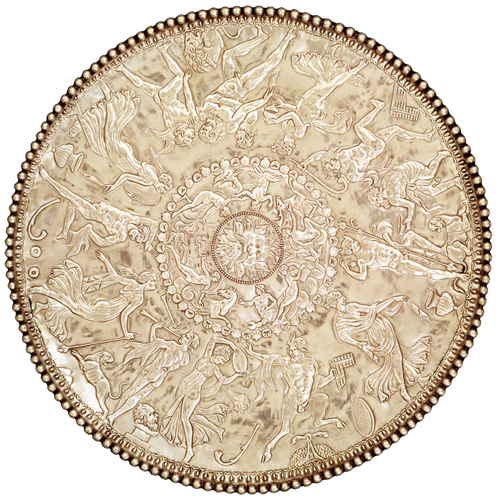
Rosetta Stone In
196 BC Egyptian priests wrote a decree on this tablet in both Greek and
in Egyptian hieroglyphics. Found in 1799, it proved crucial in
deciphering Egyptian pictorial writing.
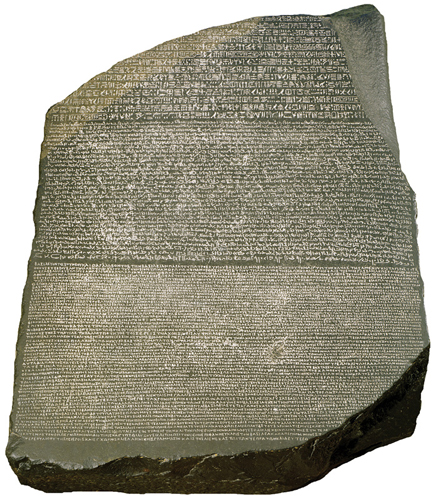
Portland Vase Sold
by Britain’s ambassador to Naples, Sir William Hamilton, to the Duchess
of Portland, this exquisite 1st-century blue-and-opaque glass vase
comes from a tomb in Rome, and was probably made by a Greek craftsman.
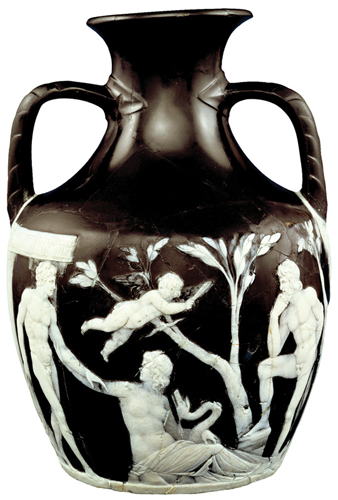
Rameses II This
is all that remains of the colossal granite statue of Rameses II (c1275
BC) from his memorial temple at Thebes. The statue was acquired in the
late 18th century by Charles Townley, British ambassador to Rome. Mixtec-Aztec Mosaic Mask Made
by Mixtec artisans for the Aztec royal court in Mexico, this mosaic
mask is believed to be of the god Quetzalcoatl, and dates from the 15th
century. Kwakwaka’wakw The large, carved and painted wood thunderbird from North America was used as an anvil for breaking coppers (a form of currency) at potlatches (ceremonies of Pacific Coast peoples in which chiefs destroyed their worldly goods). Amitabha Buddha This
impressive stoneware Buddha dates from around AD 585, during the
Chinese Sui Dynasty, when Buddhism became the state religion.
|